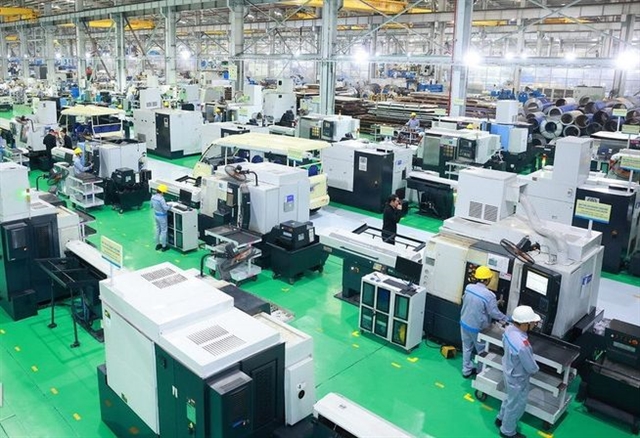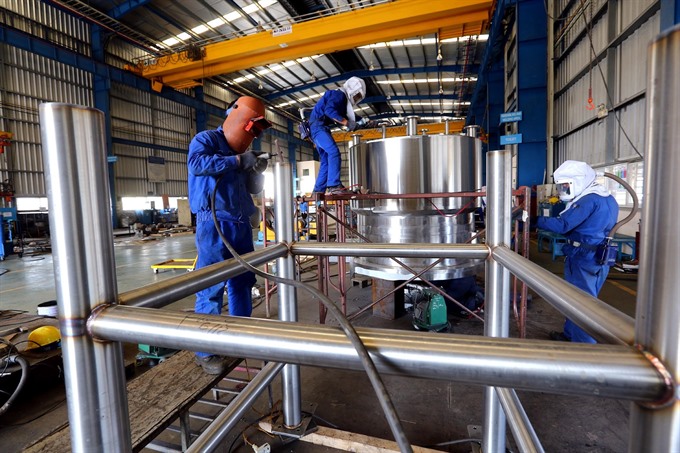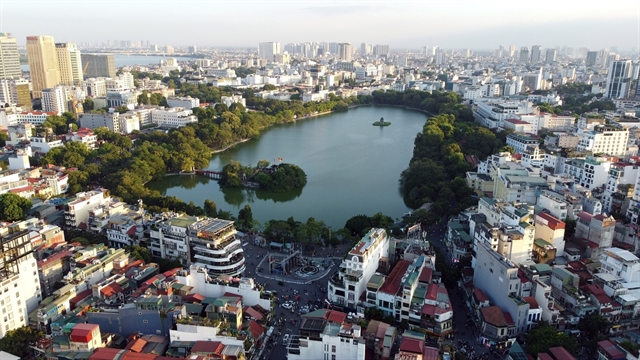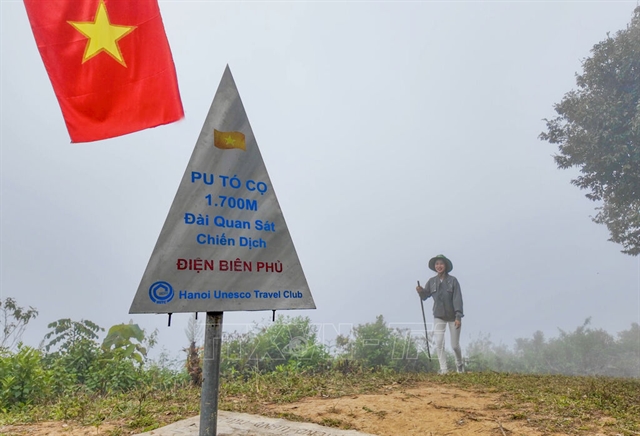 Economy
Economy

Việt Nam has remained an attractive destination for foreign investors in 2017 with total foreign direct investment (FDI) capital registered in the country hitting a record high of US$35.88 billion, up 44.4 per cent against last year.
 |
| Workers manufacture mechanical gear at Japanese-invested RK Engineering Co. ltd. in Đình Vũ Industrial Zone in the northern province of Hải Phòng. — VNA/VNS Photo Danh Lam |
HÀ NỘI – Việt Nam has remained an attractive destination for foreign investors in 2017 with total FDI capital registered in the country hitting a record high of US$35.88 billion, up 44.4 per cent against last year.
Reports from the Foreign Investment Agency under the Ministry of Planning and Investment showed that of the sum, $21.27 billion came from 2,591 new projects, up 42.3 per cent against last year.
Another $8.41 billion was added to 1,188 existing projects, 49.2 per cent higher than last year.
The remainder of the FDI, worth $6.19 billion, came from 5,002 deals made by foreign investors to contribute capital to businesses and to buy shares of Vietnamese businesses, jumping 45.1 per cent compared to last year.
In 2017, FDI disbursement also saw a record setting, as it increased 10.8 per cent to $17.5 billion. In the previous years, the capital influx reached only some $11-12 billion.
Among 19 industries and sectors attracting FDI capital in 2017, manufacturing-processing industry remained the top sector, receiving $15.87 billion, accounting for 44.2 per cent of the total registered FDI.
The electricity production and distribution sector ranked second with $8.37 billion, representing 23.3 per cent of the total FDI. The real estate sector was in third place with $3.05 billion, totalling 8.5 per cent.
Among 115 countries and territories investing in Việt Nam this year, Japan topped the list, with $9.11 billion, making up 25.4 per cent of the FDI pledged to the country. It was followed by South Korea with $8.49 billion or 23.7 per cent of the FDI, and Singapore with $5.3 billion or 14.8 per cent.
The southern economic hub of HCM City was at the top, among 59 localities receiving FDI during the year, followed by the northern province of Bắc Ninh and the central province of Thanh Hóa.
Among some of the mega projects in 2017 were three BOT thermal power projects. They were Japan’s $2.8 billion Nghi Sơn 2 thermal power plant in the central province of Thanh Hóa, Japan’s $2.58 billion Vân Phong 1 thermal power plant in the central province of Khánh Hòa and Singapore’s $2.07 billion Nam Định 1 thermal power plant in the northern province of Thái Bình.
Large projects in other industries included South Korea’s $2.5 billion Samsung expansion project in the northern province of Bắc Ninh, the $1.27-billion Block B Ô Môn gas pipeline project in the Mekong Delta province of Kiên Giang and South Korea’s $885.85 million smart complex project in HCM City’s Thủ Thiêm New Urban Area.
To fully capitalise on the FDI capital source in the new stage, the Ministry of Planning and Investment is drafting the foreign direct investment strategy for 2018-23. With assistance from the World Bank, the FDI strategy drafts that Việt Nam at this stage should focus on sectors having advantages, and those that foreign firms could bring more benefits to, rather than domestic firms.
Under the draft strategy, Vietnam should set out priority sectors for attracting FDI, such as those that needs increased value and competitiveness, including manufacturing (high-grade metals/minerals/chemicals/plastics and high-tech/electronic components); service (logistics and maintenance, repair and overhaul); agriculture (innovative and high value agricultural products such as rice, coffee, seafood, fruits); and travel (high-value tourism services). - VNS




